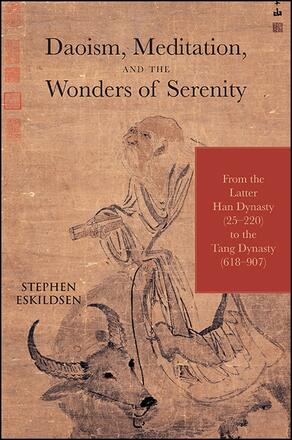
Daoism, Meditation, and the Wonders of Serenity
From the Latter Han Dynasty (25-220) to the Tang Dynasty (618-907)
Alternative formats available from:
An overview of Daoist texts on passive meditation from the Latter Han through Tang periods.
Description
Stephen Eskildsen offers an overview of Daoist religious texts from the Latter Han (25–220) through Tang (618–907) periods, exploring passive meditation methods and their anticipated effects. These methods entailed observing the processes that unfold spontaneously within mind and body, rather than actively manipulating them by means common in medieval Daoist religion such as visualization, invocations, and the swallowing of breath or saliva. Through the resulting deep serenity, it was claimed, one could attain profound insights, experience visions, feel surges of vital force, overcome thirst and hunger, be cured of ailments, ascend the heavens, and gain eternal life.
While the texts discussed follow the legacy of Warring States period Daoism such as the Laozi to a significant degree, they also draw upon medieval immortality methods and Buddhism. An understanding of the passive meditation literature provides important insights into the subsequent development of Neidan, or Internal Alchemy, meditation that emerged from the Song period onward.
Stephen Eskildsen is North Callahan Distinguished Professor of Religion at the University of Tennessee at Chattanooga and the author of Asceticism in Early Taoist Religion and The Teachings and Practices of the Early Quanzhen Taoist Masters, both also published by SUNY Press.
Reviews
"[This book] provides a wealth of information about Medieval Daoist meditation practices, historical figures, and scriptures. It will be very useful in both undergraduate and graduate courses concerning Daoism, meditation, and comparative studies, especially between Daoism and Buddhism. I applaud Stephen Eskildsen for bringing forward this important work for others who seek to understand these texts, practices, and maybe even want to find their own serenity and its wonders. " — James D. Sellmann, China Review International
"This book is a major contribution to Daoist studies, and will edify advanced students as well as their instructors. " — Religious Studies Review
"…solid scholarship on the Daoist tradition …the book makes a major contribution to our understanding of Daoist meditation, and it will assist individuals in understanding Daoist meditation in a more integrated and sophisticated manner. " — Journal of Chinese Religions
"…a welcome and useful study on a central aspect of medieval Daoist practice, one which fills a gap in our hitherto understanding of the evolution of that religion. As such it is one that is sure to find its place among the classical studies on medieval Daoism. " — Entangled Religions
"…a comprehensive and exceptionally well organized and presented overview of historical Chinese Daoist religious texts. " — Midwest Book Review